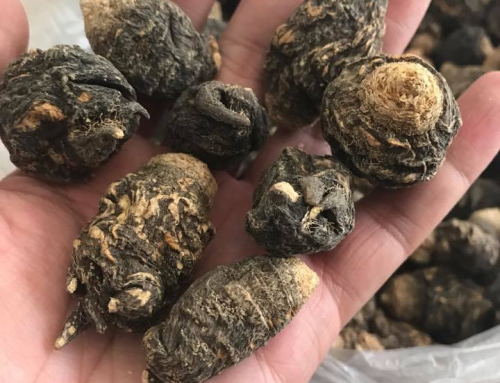In order to successfully lose fat, one must create a stimulus that tells the body to burn more fat and to stop storing/trying to store fat. Sesamin, a lignan found in sesame seeds, has been shown to do just that. Learn more…
When one diets to lose fat, it is relatively easy to lose those first 5-10 pounds of fat. After that initial stage of fat loss, the body begins to make it harder to lose more fat and easier to regain fat by reducing the concentrations of “fat-burning” enzymes and up-regulating the “fat storage” enzymes.
These changes in enzyme activity play a big role in the cessation of fat loss and lack of progress experienced by dieters. The body wants to function in a specific range of body fat referred to as the body’s “set point.” The body functions optimally at its set point level of body fat and therefore attempts to keep its fat storages at this set point.
In an attempt to override the bodies desire to keep its fat storage near its set point, dieters often take weight loss supplements, such as thermogenics. The problem with most weight loss supplements is they do nothing to override the body’s desire to stop fat loss and merely provide a means to boost one’s metabolism for a short while.
While such a supplement may help one lose a little more fat, they are only a short-term solution for dieters. Thermogenics, such as ephedrine, aid in fat loss by causing fat cells to release fatty acids. The body has a fixed capacity for fat loss and if enzyme activity has been shifted to promote fat storage over fat oxidation, releasing fatty acids from fat cells will be of little use if they cannot be oxidized.
In order to successfully lose fat, one must create a stimulus that tells the body to burn more fat and to stop storing/trying to store fat. Sesamin, a lignan found in sesame seeds, has been shown to do just that – make the body oxidize more fat and increase its capacity to do so while decreasing the storage of fat.
Sesamin & The Peroxisome Proliferator-Activated Receptors (PPAR)
Sesamin is a lignan isolated from sesame seeds. A lignan is a molecule that combines with another entity acting as an “activator.” In the case of sesamin, it binds to and activates a receptor called Peroxisome Proliferator-Activator Receptor Alpha (PPARalpha).
The PPAR receptor family is divided into three subgroups:
- Alpha
- Delta
- Gamma
Sesamin, Mitochondria, Peroxisomes, & Beta-Oxidation

Fat can be oxidized in the mitochondria and the peroxisomes of cells, the majority of this oxidation occurring in skeletal muscle cells and the liver. PPARalpha activation by sesamin increases fat oxidation in mitochondria and peroxisomes by increasing the expression of enzymes involved in beta-oxidation of fatty acids9.
Mitochondria & Peroxisomes Two Major organelles of the human cell. Two Major organelles of the human cell.
Mitochonidria: The spherical or elongated organelles in the cytoplasm of nearly all eukaryotic cells, containing genetic material and many enzymes important for cell metabolism, including those responsible for the conversion of food to usable energy. Also called chondriosome. Peroxisomes: These function to rid the cell of toxic substances, such as hydrogen peroxide, or other metabolites and contain enzymes concerned with oxygen utilization such as D-amino acid oxidase and urease oxidase. Peroxisomes were discovered by Christian de Duve in 1965. |
 |
|
 |
||
Of vital importance, Sesamin increases the expression of the mitochondrial enzyme carnitine palmitoyl transferase (CPT)9. CPT, the rate-limiting enzyme in beta-oxidation of fatty acids in skeletal muscle and liver cell mitochondria, is found on the outer membrane of mitochondria and carries fatty acids across the membrane into the mitochondria by binding to them.
Increasing the expression of CPT will allow more fatty acids to be transported into the mitochondria where they can be oxidized.
Sesamin’s ability to cause an increase in fatty acid oxidation in both the mitochondria and peroxisomes is important because mitochondria can only oxidize short-chain to long-chain-fatty-acids while peroxisomes can shorten fatty acids of all lengths, including very-long-chain-fatty-acids (VLCFA).
Sesamin & Lipogenesis

In addition to increasing the oxidation of fat, Sesamin supplementation has also been shown to decrease lipogenesis (fat storage) by decreasing lipogenic enzymes in the liver.
Sesamin has been shown to decrease the lipogenic gene expression of sterol regulatory element binding protein-1 (SREBP-1), acetyl-CoA carboxylase, and fatty acid synthase, among other lipogenic enzymes10, which means less fat is esterifized in the liver and therefore less fat is stored in adipose tissue (fat cells).
So Sesamin works in two ways to make you lean (and keep you lean):
- Increasing fat oxidation
- Decreasing fat storage

Sesamin & Ketogenesis

Ketogenesis occurs when fatty acid oxidation is increased to a point where the liver cannot metabolize off the fatty acids for energy. Excess acetyl-CoA (which can be created from fat, glucose, or amino acid metabolism) is converted to ketones in the liver and released into the bloodstream to be used by other tissues (specifically the brain).
Ketogenesis is very important during low carb diets because the brain cannot use fatty acids for fuel, it can only use glucose. When glucose is low, the brain will turn to ketones for its energy.
Sesamin has been shown to increase ketone production11. Increasing ketone production should have protein-sparing effect as less amino acids will be needed to create ketones. This means your muscle mass will be spared while dieting.

Health Benefits Of Sesamin

In addition to increasing fat oxidation and decreasing lipogensis, Sesamin supplementation also has many health benefits. Sesamin has been shown to:
- Be antihypertensive3
- Be an antioxidant itself and increase the recycling of vitamin E
- Provide liver protection against alcohol and improve liver function5
- Decrease cholesterol levels6, while increasing high density lipoprotein (HDL aka “good cholesterol”) levels7
- Be an anti-inflammatory8.
These health benefits alone make Sesamin supplementation a wise decision.

Supplementing With Sesamin

The sesamin content of sesame seeds and sesame oil is very low, meaning you would have to eat a TON of seeds/oil before you get even close to obtaining enough sesamin to reap its benefits.
Luckily, concentrated sesamin is commercially available.

Sesamin “Point-Blank” Summary

Sesamin supplementation will prime your body to oxidize fat and not store it. Sesamin supplementation should also help spare muscle mass while dieting and has many positive health benefits.
Sesamin:
- Increases thermogenesis
- Increases fat oxidation
- Up-regulates “fat-burning” enzymes
- Decreases fat storage
- Down-regulates “fat-storage” enzymes
- Increases insulin sensitivity
- Increases ketone formation
- A fuel used when dieting
- Spares glucose
- Potent antioxidant
- Cholesterol reducer
- Increases HDL levels
- Decreases LDL levels
- Decreases blood pressure (antihypertensive)
- Improves liver and kidney health
- Anti-inflammatory
- No stimulant effect







Leave A Comment